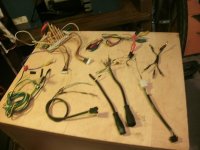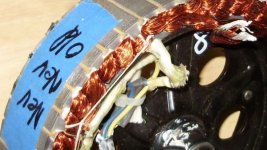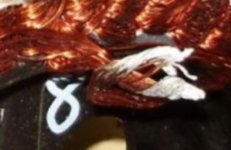John in CR
100 TW
999zip999 said:John I do understand and read most all of your posts. I'm triing. Plus I did the long math of 36 combos just to check. I found only two working forward matches.
If you found only 2, then you didn't try 36. When trying combos, pick halls or phase, whichever is easier to swap. Alligator jumpers work great for swapping by making it simple, plus they also act like a fuse to limit high current so nothing can blow. Be systematic swapping those 3 wires only changing to at a time and try all 6 possibilities. Using one as an anchor to try with all 3 colors makes being systematic easy. You will get a valid forward or reverse. If reverse, then swap 2 of the static wires, and then go back to the original 3 and find the right combo for forward. You'd have to be unlucky to try the max of 12 possibilities this way. No need to take notes or use a ridiculous spreadsheet.





